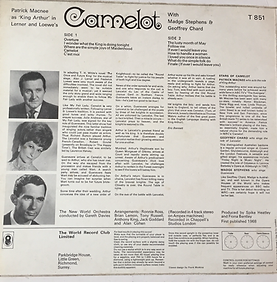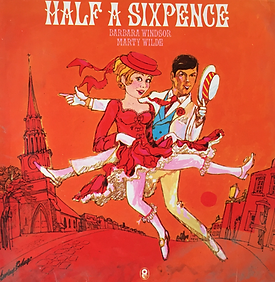
THE LIFE OF FIONA BENTLEY
BIOGRAPHICAL TIMELINE
1928 | FIONA WAS BORN
Born in Kenya the second of three children, to Nancy ard George Bentley. Fiona spent her early years growing up on their coffee plantation in Kiambu with few modern trappings.
1934 | FAMILY RELOCATE TO DARTMOOR
Following the premature death of George Bentley, Nancy married Bill Matthews, an army officer in the King’s African Rifles. The family moved to Dartmoor and started army life in the U.K. where Bill was seconded to the Royal Sussex Regiment. "The children loved the beach and Fiona became everybody's friend. She was difficult to restrain from wandering with strangers because they had white faces, and she needed constant watching“. (Nancy Matthews 'Trek onto Tomorrow')

1937 | A MOVE TO CHICHESTER
The family moved to Chichester where Bill was promoted to Captain and became second-in-command to 'Bolo' Whistler (later General Whistler). "There was an easy to climb tree in the garden which Fiona and Jean (Fiona's sister) would shin up to try and escape lessons and it needed a mighty bribe to bring them down!"(Nancy Matthews 'Trek onto Tomorrow')
1939 | BOARDING SCHOOL
Fiona was sent to Gardenhurst, a boarding school in Burnham-on-Sea. War-time holidays were spent in the relative safety of Fernden School, Sussex which opened its doors to the families of pupils. Fiona's brother, Campbell was a former pupil. They would arrive with labelled jars of butter, sugar, tea and marmalade rations. They had waistcoats made from strips of chamois, overcoats from blankets and old jumpers unravelled and re-knitted. When Fiona was due to enter the 6th Form, she decided she wanted a stage career and to change to a school in which drama was a prominent feature. Accordingly, she left for Lawnside School, Malvern, and enjoyed her time there.
1945 | YORKSHIRE LIFE
1945 | ASSISTANT STAGE MANAGER AT THE LYCEUM THEATRE IN SHEFFIELD
On leaving school, Fiona moved with the family to Wortley, Yorkshire - (Nancy trained as a Conservative Party agent and was eventually responsible for the South Yorkshire Federation comprising Rotherham, Rother Valley and Don Valley. She served for 40 years, nurturing the likes of William Hague and was awarded an MBE.)
Fiona planned to go to the Guildhall School of Music and Drama in London and for the present needed to find work. She wrangled a job as Assistant Stage Manager at the Lyceum Theatre in Sheffield. She became good friends with Frankie Howerd who was performing in 'Jack and the Beanstalk'. Sharing sandwiches and taking him back to Wortley, Nancy described him as "vague and easy going, surprisingly unfunny off-stage". Frankie persuaded Fiona to pursue her career in London.
In 1946, Fiona did some acting training in London and although she obtained some work with local Northern Repertory Companies, she eventually decided that she preferred to be involved in stage management.
1950 | STAGE MANAGER THE PLATINUM SET
1950 | STAGE DIRECTOR TAKE IT FROM HERE
1950 | TAKE IT FROM US
LONDON'S WEST END
By 1950, Fiona had worked her way to becoming Stage Manager for 'The Platinum Set' at the Saville Theatre, Shaftesbury Avenue, London (30/3/50-8/4/50).

Ronald Searle cartoon for Punch
That summer, Fiona became Stage Director for the revue 'Take It From Here' at the Winter Gardens Pavilion Theatre, Blackpool, presented by Jack Hylton in association with George and Alfred Black, sons of the legendary impresario of the forties, George Black. It starred Jimmy Edwards, Joy Nichols and Dick Bentley and Cyril Ornadel was the Musical Director. He and Fiona were the youngest team in the theatre world and it was unheard of in those days for a woman to be in charge of a show. "Everyone who worked with her adored her, especially the stage hands who had to take their orders from her". (Cyril Ornadel, 'Reach for the Moon')

In October Fiona transferred with the show, now called 'Take it From Us', to the Adelphi Theatre in London's West End (31/10/50 - 6/10/51). It opened to universal rave reviews. Jack Hylton invited the whole company to a first night party. "He was obviously pleased with us, although he didn't actually say so. He just 'looked' pleased. His philosophy was, 'If a show is a success, everyone is a success." (Cyril Ornadel 'Reach for the Moon'). Fiona proved she could cope with last minute dramas and ensure the smooth running of the show. Enhancing her reputation with Jack Hylton, she became part of the London theatre set, attending the likes of the glittering first night party for 'Kiss me Kate' at the Coliseum in 1951.
1950/51 | STAGE DIRECTOR
THE HAPPY FAMILY

Fiona was Stage Director for a Jack Hylton production of 'The Happy Family' at the Duchess Theatre, London (14/5/51-7/6/51).
Fiona helped Cyril Ornadel produce some Sunday charity concerts using the orchestra from 'Take It From Us', including one with Richard Attenborough as compére, starring Bernard Miles, Arthur English and Vera Lynn.
Fiona and Cyril sold their song 'Live Happily' to George and Alfred Black who used it as the opening number in the Norman Evans show 'Over The Garden Wall' at the Winter Gardens Pavilion Theatre Blackpool, where they had originally written it in the orchestra pit.

Tom Gill, Fiona Bentley and Brian Johnston (commentator) preparing for the BBC Light radio broadcast of ‘The Happy Family’ from the Duchess Theatre on 28th June 1951 at 19.45.
1952 | STAGE DIRECTOR
THE MERRY WIDOW
Fiona was Stage Director for Jack Hylton's production of 'The Merry Widow' (revival) at the Stoll Theatre Kingsway, London starring Margaret Mitchell, Peter Graves and Jerry Vero (14/4/52-14/6/52)
1954 | ASSISTANT TO JOHN DAY
Fiona was initially secretary and then assistant to John Day, an Australian. He was Sales Director for Victoria Publications, the newly established mail order division of the Good Housekeeping Institute owned by the Hearst Corporation.
Fiona met Norman Lonsdale, son of Leo Lonsdale of the Lonsdale Investment Trust. (In 1961 this merged into the merchant bank, Kleinwort Benson Lonsdale). Fiona introduced Norman to John Day and the three worked on forming a mail order record club along the lines of the record clubs in America.
"Norman Lonsdale was an extremely handsome man of superb taste and charm... quite the most astute man I had ever met. He had the invaluable talent of being able to listen to what people were saying to him, and then clarify the situation with a few brief sentences. He was a natural chairman of companies". Cyril Ornadel, 'Reach For The Moon'
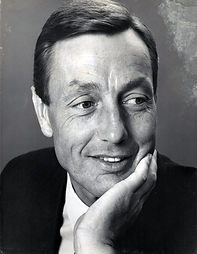
1955 | FIONA BENTLEY MEETS NORMAN LONSDALE
1956 + | THE WORLD RECORD CLUB INCORPORATED

The World Record club was incorporated. The board consisted of Norman Lonsdale as Chairman and Managing Director, mail order expert John Day, responsible for the framework, promotional and operational side of the business, Richard Attenborough, well connected in show business and Fiona, initially supporting Norman and increasingly turning her creative talents to record production.
John Day, Fiona Bentley, Richard Attenborough and Norman Lonsdale
The first advertisement soliciting membership was on the 29th January 1956. Members selected records from a catalogue of principally classical music, initially sourced from deleted stock produced by other record labels, and reissued at a cut price. Despite opposition from all the major British record companies, material was obtained from minor companies in Europe and in time from the likes of Decca, Deutsch-Grammophon, R.C.A and Capitol Records
WRC began to make its own quality recordings, at the start using conductors Hans Swarowsky and Muir Mathieson, often with the Sinfonia of London or Viennese Orchestras.
In 1958, the celebrated recording engineer, Anthony C. Griffith, became recording manager. He made recordings of Leon Goossens, Arthur Bliss, Reginald Jacques, Imogen Holst and the first ever recording of Colin Davis, conducting the Sinfonia of London for Mozart’s Symphonies 29 and 39.

Mozart Symphony No. 29 and 39. Sinfonia of London conducted by Colin Davis, released under The World Record Treasures series by World Record Club.
The back cover reads, “This is the first record that Colin Davis has made, but he approached the special problem of the recording studio with brilliance and understanding.”

Griffith’s recording of Mozart’s Oboe Concerto in C Major and Symphony No. 34 in C Major, with Leon Goossens and Colin Davis conducting the Sinfonia of London. Of particular interest was the publishing of technical details and photographs of the studio sessions, on the sleeve.

Leon Goossens, Norman Lonsdale, unknown, and Colin Davis discussing the recording.
Photograph by Eric Auerbach.
By 1958, WRC had a membership of 150,000. It continued expanding its repertoire to include the music of Vaughan Williams, Elgar; important solo recordings of Jorge Bolet and Shura Cherkassky; and a strong series of chamber music under its Recorded Music Circle, as well as show albums, opera and the pop and light music arenas.

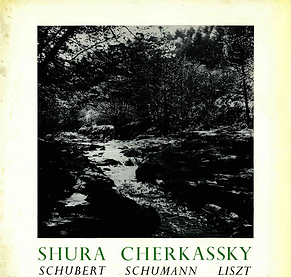
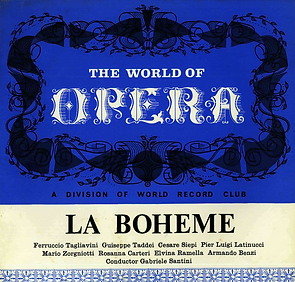
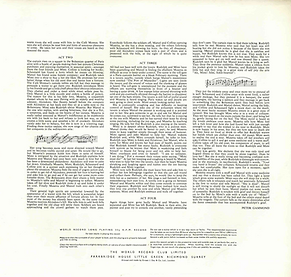
Sleeve notes were often written by Peter Gammond, acclaimed music critic and author.

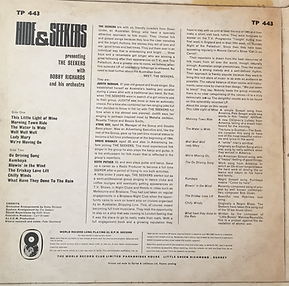
WRC was the first to release LP’s of the Seekers.
Fiona’s role in helping get WRC going and indeed thinking up the name, increasingly turned to a creative one. In 1956, she had her first taste of record production when she assisted Cyril Ornadel in his also first experience as a record producer. They were to record ‘The Water Gypsies’ for WRC. The cast from the London show, Vanessa Lee, Bruce Trent, Harry Dawson and Joan Sims performed at Levy’s Sound Studios where the brothers Morris and Jacques Levy engineered the sound. Cyril and Fiona agreed best takes, edited the tapes and the first records were pressed!
This initial experience inspired Fiona to help expand WRC into the light music genre. Later in 1956, she thought it would be a good idea for Cyril to conduct a series of ten magnificent orchestral albums including ‘With A Song in My Heart’ (Rodgers & Hart), ‘Will You Remember’ (Sigmund Romberg), ‘Our Love is Here to Stay’ (George Gershwin), ‘My Fair Lady – Orchestral Suite’, and ‘The Music of Cole Porter’. Norman Newell, the best record producer was commissioned to produce the series, using the finest arrangers such as Brian Fahey and John Gregory. The musicians were top session men such as Sidney Sax, leader of the orchestra, Marie Goossens, harpist; and Stan Roderick, trumpet.
WRC went from strength to strength, employing leading professionals of the international music world and producing quality and collectable recordings. Its catalogue numbering well over 1,000, WRC expanded to Australia under John Day where it operated until 1976, and also to New Zealand. The U.K. operation was taken over by E.M.I. in 1965.
John Day writes, “The salient point is that not one of us knew anything whatsoever about records when we started – though we three (Norman, Fiona and John) learned very quickly! So far as I was concerned, it was my job to sell the product – it could have been soap for that matter – but at least my whole training had been mail-order. It was Norman’s major task to handle the negotiations and finances, and he’d had experience of that. But Fiona virtually had no training nor experience at all of what she ultimately accomplished – all the more credit to her”.
1957 | FIONA MARRIES
NORMAN LONSDALE
-
CHILDREN
Fiona married Norman Lonsdale and their daughter Joanna was born. James was born in 1958 and Emma-Jane in 1962



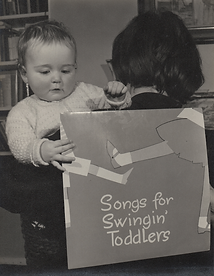
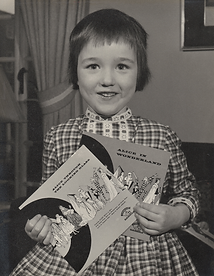
James, Emma-Jane and Joanna c. 1962
In the early 60's, Fiona and Norman adopted twin sisters, Sara and Jane Dilley, children of good friends.

Jane, Fiona and Sara c. 1960
1959 | FIONA BENTLEY
PRODUCTIONS LAUNCHED
Fiona decided to form a recording production company of her own and founded Fiona Bentley Productions (FBP). She was joined by Morys, Lord Aberdare and Cyril Ornadel. Morys, ex-army and real tennis champion, had been working for the BBC and Cyril had been enjoying great success as Music Director for 'My Fair Lady' and as conductor for 'Sunday Night at the London Palladium'.
The idea of FBP was to focus on commissioning and producing it's own musical adaptations of well-known children's stories, Fiona as producer, Cyril, Music Director and Morys managing the business side. A deal was struck with E.M.I. to licence the recordings to their HMV Junior Club label and at least 34 were produced between 1960-1963, remaining in E.M.I.'s catalogue until 1990. They were released on coloured vinyl so as to be attractive to children, something that had not been seen in the U.K.
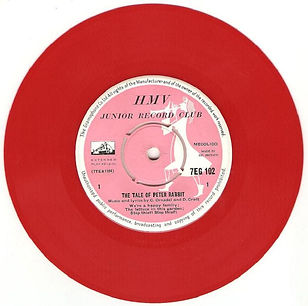
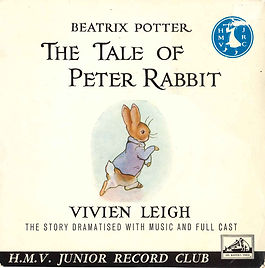
1960 | BEATRIX POTTER STORIES RECORDED
1960-63 | CHILDREN'S MUSICAL ADAPTATIONS
The first recordings were of the Beatrix Potter stories. Fiona had obtained the rights and persuaded Vivian Leigh to narrate them. Songs were specially written by Cyril Ornadel with lyrics by David Croft. Actors such as Percy Edwards, Juliet Mills, Barbara Denny and Jerry Verno took the character parts. These recordings were highly acclaimed and comprised 'The Tale of Benjamin Bunny', 'The Tale of Peter Rabbit', 'The Tale of Mrs Tiggy-Winkle', 'The Tale of Squirrel Nutkin', 'The Tale of Jemima Puddle-Duck', 'The Tale of the Flopsy Bunnies' and 'The Tale of Johnny Town-Mouse'.
FBP produced further children's musical adaptations using well-known actors to narrate and take the character parts with specially commissioned music. These recordings included 'Treasure Island' with Sir Donald Wolfit, 'Sinbad the Sailor' with Dick Bentley, 'The Story Of Noah' with Sir Ralph Richardson, 'Nursery Rhyme Toys' with Anthea Askey, 'Fifteen Favourite Children's Songs', 'Ali Baba' with Dick Bentley, 'Swan Lake' with Moira Shearer, 'Thumbelina', 'Cinderella' with Richard Attenborough, 'The House at Pooh Corner' with lan Carmichael, 'Snow White' and 'Rose Red', 'The First Christmas', 'Musical Multiplication Tables', 'The Nursery Ryme Family', 'The Sleeping Beauty', 'The Goose Girl', 'Little Black Sambo', 'Musical Zoo', 'Now We Are Six', 'Red Riding Hood'/'Goldilocks' with Jean Metcalfe, 'The Water Babies' with Ann Todd, 'Jonah And The Whale' with Robert Morley, 'Little Women'/'Little Men', and 'Carnival of The Animals' with Irina Baronova.
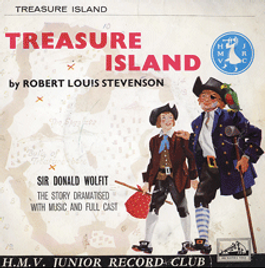
1960-61 | FCM FORMED
-
SHOW ALBUMS
In 1960, Fiona decided to form another recording company with Cyril Ornadel and Morys, Lord Aberdare to be called F.C.M. after their initials. The impetus for the new company was the commissioning by World Record Club (Australia) of twenty-seven show albums. These were recorded in Studio One Abbey Road and produced by Cyril, most of them with an orchestra specially formed, called the New World Show Orchestra.
These show albums included ‘Oklahoma’, ‘South Pacific’, ‘Carousel’, ‘The King and I’ and were the forerunners of many more commissions from World Record Club (Australia).
John Day writes, “After I returned home, WRC Australia commissioned Fiona to produce many many light music recordings – though in many cases (say, the music of Gershwin) the contents were chosen by Fiona, as was the presentation (whether purely orchestral, partly vocal etc.). Thus Fiona was responsible for the creative side – we in Australia left it entirely up to her. She was hugely creative in this endeavour and highly successful.”
In 1961, F.C.M. produced another mammoth series of show recordings for WRC (Australia), including ‘Bitter Sweet’, ‘No No, Nanette, Naughty Marionetta’, ‘Gigi’, ‘Funny Face’ and ‘The Story of the Passion’ which was recorded with Sir Ralph Richardson and Douglas Fairbanks Jnr. and the London Philharmonic Orchestra.

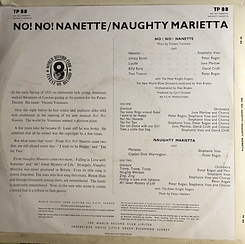
1961 | THE LIVING SHAKESPEARE
1962-65 | THE LIVING BIBLE AND CONTINUED WORK
1968 | POETRY AND MUSIC SERIES
1928-1978 |
FIONA BENTLEY
F.C.M. embarked on their next huge project to record twenty-six Shakespeare plays using prominent actors and members of the Old Vic Company. Fiona and Morys cut the text and Cyril and Desmond Leslie created the music and sound effects. Produced over the next three years these included 'Anthony and Cleopatra' with Vivian Leigh, 'Hamlet' with Sir Michael Redgrave, 'Othello' with Sir John Gielgud and Ralph Richardson, 'As You Like It' with Dame Maggie Smith and 'The Tempest' with Sir Donald Wolfit. The Living Shakespeare series was unique and was successfully sold worldwide.
"The Living Shakespeare series limited each audio adaptation to the confines of a single disc. A concession to the single LP was becoming a standard compositional unit in youth culture, a length to which Shakespeare might be fruitfully adapted. The design, particularly for the tragedies, was a strange hybrid of concept album, 'greatest hits' compilations and stage dramatization. Aberdare and Bentley's adaptations preferred abridged key scenes rather than isolated speeches; narrative continuity was provided by refocusing the plays on the major protagonists and in some cases adding a narrator... The productions consistently adopt the acoustic of a theatrical auditorium, sharp contrast between foreground and background marks their principal means of spatial design and sound effects are only sparingly used to establish the occasional realistic setting. Their most striking element, however, is the prominence of Desmond Leslie's musique concrete, which appears not only between scenes but sometimes also beneath the speeches and dialogue, giving some of the recordings the through-composed feeling of a film soundtrack”. (Douglas Lanier, Professor of English, University of New Hampshire in 'Companion to Shakespeare and Performance').
F.C.M. commenced another outstanding project to record the Old Testament and Psalms, adapted from the King James Bible, narrated by Sir Laurence Olivier and presented by Douglas Fairbanks Jr. Music was sourced from the leading composers in the Holy Land and included the first recording of Paul Ben Haim's First Symphony and his Concert for Strings.
The Living Bible series comprising 12 L.P.'s was the most expensive disc package to be launched in the U.K., with distribution rights assigned to E.M.I. who threw a magnificent launch party.
F.C.M. produced many recordings of light music principally for World Record Club such as the Latin American music of Dorita y Pepe, folk songs by Cy Grant.
The advisory committee for World Record Club at that time were Norman Lonsdale, Cyril Ornadel, Fiona Bentley, Morys, Lord Aberdare, Lord Montague, Marion Lascelles, Countess of Harewood (concert pianist), Steve Race (musician and presenter), Sir Antony Hopkins (composer and broadcaster), Miles Henshaw, Ray Ellington (jazz musician famous in 'The Goon Show' and Peter Gammond (music critic). This committee commissioned further recordings from F.C.M. including 'Shake 'n smooch' and 'Everyone Who Had a Hit' with Ray Ellington, 'Group 64' with the Mike Sammes Singers, 'The Tender Touch' with Ike Issacs 'From Europe With Love' with Emile Belcourt. Along with success, F.C.M, moved to smart offices in Mount Street, Mayfair from Anderson Street.
1964/65 F.C.M. were commissioned to do more recordings for World Record Club such as 'Late Race' with Steve Race, 'Winter Sunshine' with Bill Le Sage and Ronnie Ross, and a final set of recordings of George Gershwin for E.M.I.'s Columbia Records.
In 1968 Fiona and Spike Heatley produced three covers for W.R.C. 'Camelot' starring Patrick Macaee as King Arthur, 'Half A Sixpence' starring Barbara Windsor, and their acclaimed 'Thoroughly Modern Millie' with Millicent Martin.
Fiona commissioned and produced a series of Poetry and Music for Fiona Bentley Productions, comprising two hundred poems from Shakespeare to the C20th. The poems are read by famous actors such as Christopher Plummer, Omar Sharif, Dame Flora Robson, Topol, Sir Michael Redgrave, Sir Ralph Richardson, Dame Edith Evans and Dame Gracie Fields. This mammoth series has never been released as Fiona became ill. The newly revived 'Fiona Bentley Productions' is now making this important archive available to the public for the first time.
Following a long illness, Fiona passed away at Frinton-on-Sea where she and Norman had spent many happy times at their holiday house, The Studio entertaining family, countless friends from show business and also the professional tennis world including Wimbledon champion, Margaret Court.
“I knew I would always remember her, talented, full of fun, affectionate, living life to the full, and happiest in the wide open spaces"
(Nancy Matthews, “Trek onto Tomorrow").
